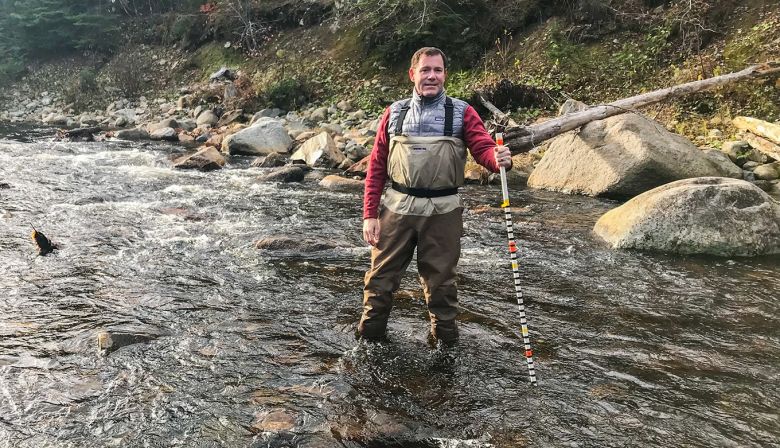Subscribe & stay up-to-date with ASF
With Covid-19 working rules in place, all of the salmon that reached the Milford Fish Lift or Orono Dam were allowed to proceed upstream until June 15.
By June 20, this included 815 Atlantic salmon allowed to proceed upstream, and 103 taken to Craig Brook as broodstock since the June 15 beginning of collection.

So, over the last decade, we’ve seen as many as 2,500 adults allowed to go upriver to spawn, as in 2011, to only a small handful, as in 2014 when only 261 adults were captured and nearly all went to the hatchery.
This year, USFWS is planning to collect 400 adults: 50 grilse, 150 males, and 200 females.
They are only taking a maximum of 30 per day, and are only collecting Monday through Thursday, plus they are taking all fish before 11 am to reduce the potential for harming the fish during the warmest part of the day

As of June 20, the intense early summer heat has meant water temperatures have reached 79 F., requiring the greatest care in handling the salmon.
The Penobscot returns of Atlantic salmon has always been complex.
The Penobscot always had a fall run of salmon and several distinct runs in different tributaries of the river. Historically, at least in the latter half of the 20th century, the midpoint of the run was around July 4.

Ditto the smolt out-migration. Those runs have shifted earlier in the Penobscot and other Maine rivers in recent decades. The prevailing theory is that the fish are adapting to the rapidly changing climate and flow conditions in our rivers. This makes it all the more important for Maine wild Atlantic salmon to get to the colder headwaters in the Penobscot and other watersheds as rapidly as possible.
Obviously it remains to be seen the total number of Atlantic salmon that will be taken to Craig Brook for broodstock this year. The 2020 Covid-19 year continues to require adjustments, and just perhaps a change in overall views on salmon migration in today’s Maine rivers.

